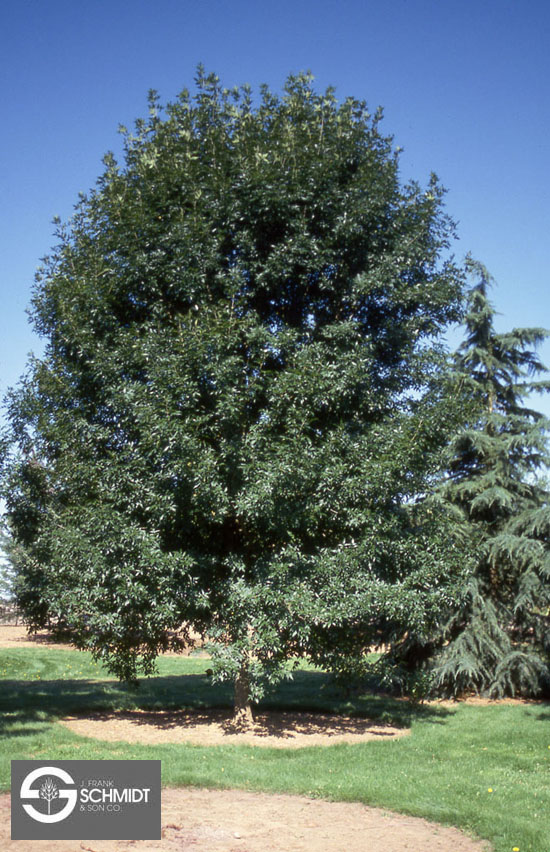| PSC 2620: Woody Trees and Shrub | Course Home | Week 6 |
Fraxinus pennsylvanica - Green Ash
Plant Viewer
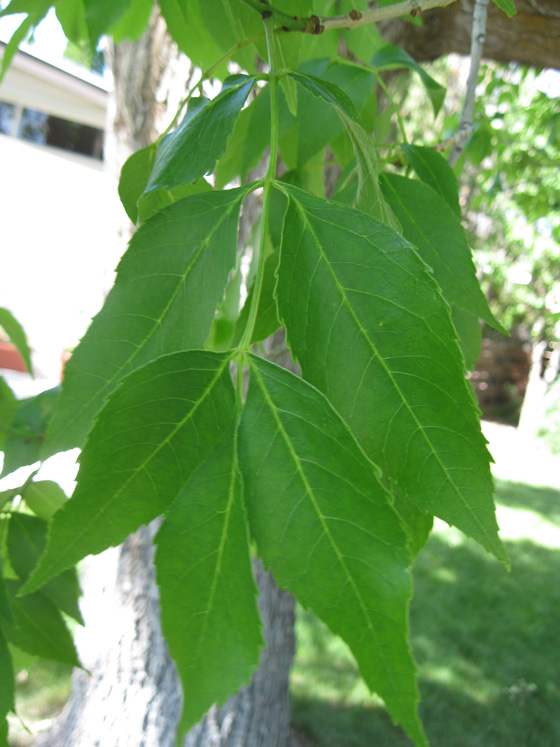 |
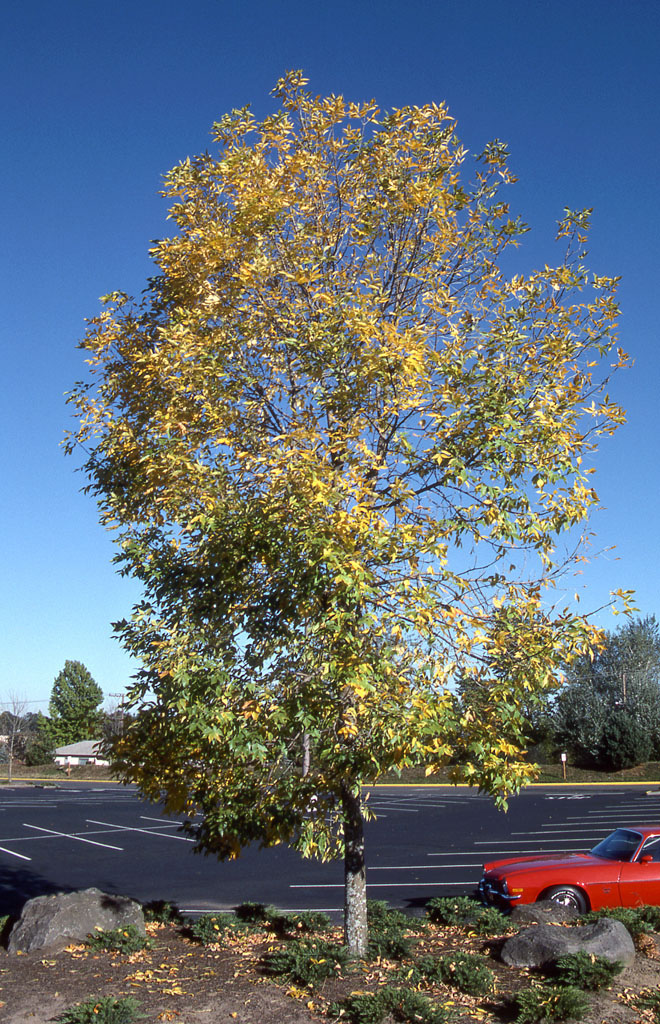 |
| The leaf of the ash is odd pinnately compound with 5-9 serrated ovate leaflets on each leaf. | The fall color is yellow, and can sometimes be quite good. |
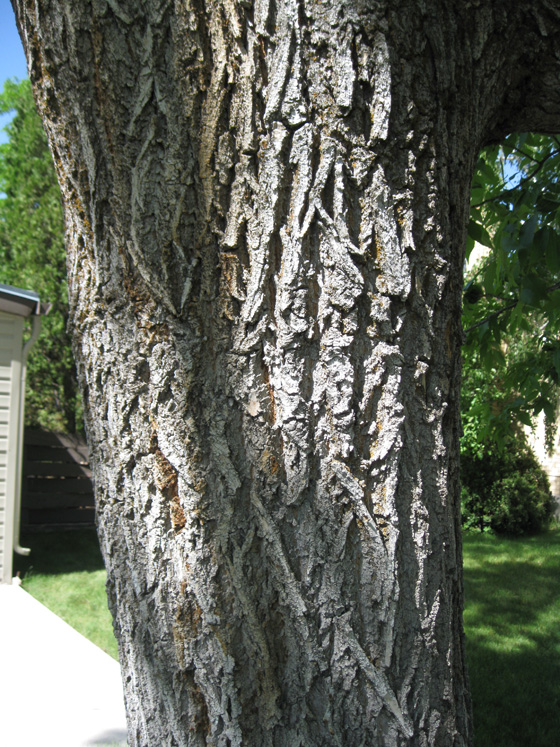 |
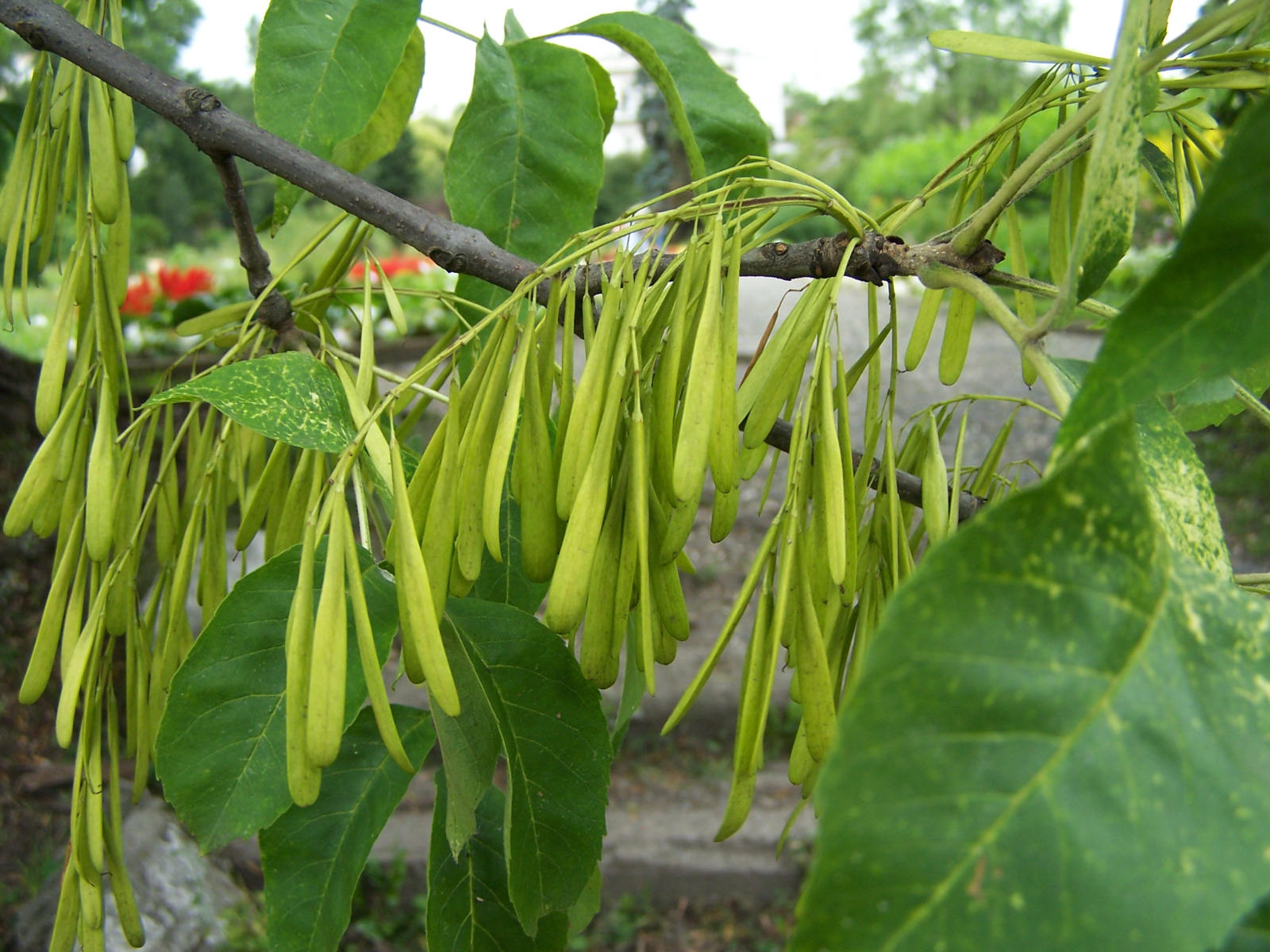 |
| The bark is corky and has pronounced ridges. | Female trees produce an abundance of thin samaras. To avoid having to constantly deal with new starts use one of the several seedless varieties commercially available. |
Plant Description
Fraxinus pennsylvanica is a large (60-70 feet high, 2/3 as wide) shade tree that has been popular as a residential and civic trees for centuries. Unfortunately, its popularity has led to it being overplanted and populations across the nation are now being ravaged by various pests and diseases. The main branches have a good upright branching habit with while younger branches exhibit a mild weeping habit with the branch tips bending upwards at their tips. It is a very diverse tree, capable of handling many climate, soil and moisture conditions.
The 8-12 inch long leaves are odd pinnately compound with 5 to 9 leaflets leaf. Each leaflet is 2-5 inches long, ovate to lanceolate in shape and usually have a serrated margin. Leaves are arranged alternately on the stem. The leaves are an attractive rich green color, and in fall turn a good yellow color.
Female trees produce narrow samaras (1-2 inches long) profusely in large clusters. The seeds are a very light green when when they first emerge and turn light brown as they mature. Ash tree that seed can be both messy and a nuisance, as young starts will begin to grow rampantly.
Landscape Use
Ash is extremely versatile and is popular for use as a shade tree, lawn tree, street tree and for civic and commercial projects. Its relatively short life-span makes it less attractive as a street tree and for use in other civic locations, but it is still used frequently.
Points of interest
Partly due to the over-planting of Ash trees in the last century, there has been a proliferation of diseases that are taking a serious toll on Ash tree populations. Currently most problematic is the Emerald Ash Borer and Verticillium wilt. Although a hardy and attractive tree, there are other trees that can be selected without the same liabilities.
Notable Cultivars
Marshall's Seedless
An old and popular form, this male selection has glossy leaves and most importantly it is seedless. Grows 40-50 feet high.
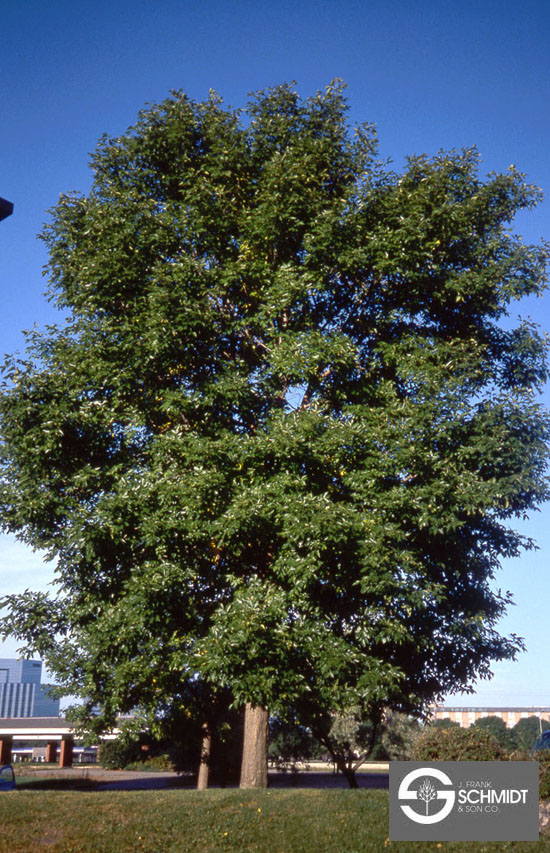
Patmore
Patmore is an improved form of Marshall's Seedless that is slightly more upright in form and has shown to have improved insect and disease resistance. Grows 50-60 feet tall, but more slowly than other Ash trees.
